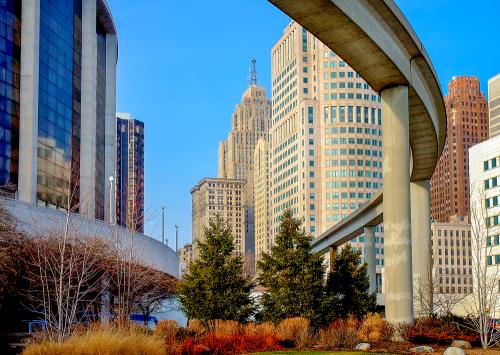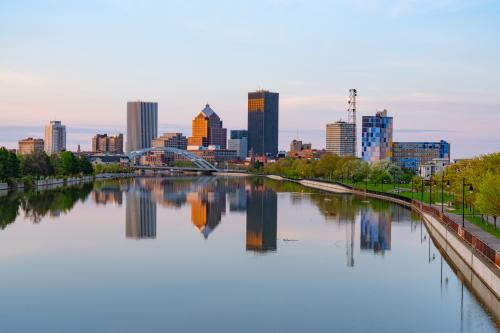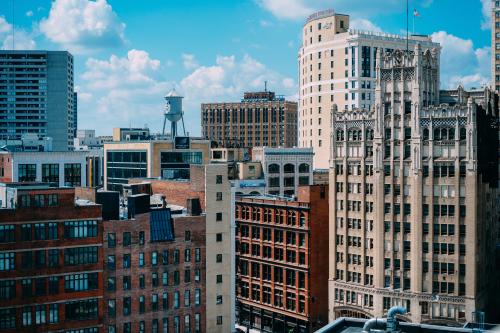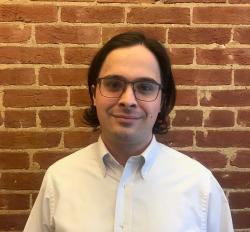The $130.4 billion of American Rescue Plan (ARP) fiscal relief funds (FRFs) available to local governments would seem tailor made for cities like Buffalo, Detroit, Cleveland, and St. Louis to deploy in transformative ways. For “legacy cities,” decades of economic decline have generally meant an array of ambitious revitalization plans are queued up but languishing, due to lack of funding and/or political will. Ironically, these informal wish lists of critical projects (e.g. addressing neighborhood revitalization, minority small business growth, workforce training and retraining, and placemaking) may better position these legacy cities to leverage FRFs in more innovative and transformative ways than more prosperous cities—if civic, business, and political leaders act strategically and collaboratively to prioritize and sequence these projects.
Now is the moment for these cities to dust off their wish lists, activate their strategic playbooks to maximize the ARP funds, and line up implementation partners. An opportunity like this may not arise for another generation, if ever. A few cities have begun to think like this, and others should start.
Legacy cities have an unexpected edge
After decades, it is clear the private sector alone cannot rescue these legacy places—market-based fixes are necessary but insufficient. So, the prospect of extensive public sector funds deployed alongside private sector investments and acting as a springboard for legacy cities and their regions is tantalizing. Several points make the case for this being a moment for strategic thinking in these cities to leverage FRFs into transformative investments.
First, pre-COVID economic momentum means local leaders can build on existing projects and initiatives. For instance, the past decade saw these cities build on their institutional assets (e.g. hospitals, universities, and historic places) to gain traction in their downtowns and neighborhoods. While the pandemic presented a dramatic and devastating interruption in that growth trajectory, the muscle memory of redevelopment remains strong. For instance, Dayton has prioritized much-needed demolition to clear the way for continuing its neighborhood redevelopment, and Buffalo is investing in waterfront projects—building on previous waterfront investments (e.g. Canalside) made in conjunction with philanthropy. Existing minority small business growth initiatives, in places such as Buffalo (e.g. Beverly Gray Business Exchange Center), Detroit (e.g. New Economy Initiative) and Dayton (e.g. The Hub at The Arcade) are acting as vehicles for these cities to prioritize and direct FRFs to support minority small business growth. This is especially essential to overcome deep barriers for minority entrepreneurs to access commercial banks, pave the way for wealth-building and job growth, and form the basis for long term macroeconomic gains for regions crippled by slow growth.
Second, the opportunity to address equity issues in these cities and regions has never been greater—without which these cities can never build back. In the cities we examined, priority investment areas under the ARP (termed Qualified Census Tracts or QCTs and defined as areas in which at least half of the households have incomes less than or equal to 60% of area median income or a poverty rate of greater than or equal to 25%) represent between approximately 40% to 80% of these cities’ populations. [1] These investments in the QCTs can reinforce place-based initiatives already underway, such as East Side Avenues in Buffalo and the Strategic Neighborhood Fund in Detroit, catalyzed with state and local public investments and scaled with philanthropic funding. For instance, over 60% of Buffalo residents live in a QCT—which encompass the four corridors contained in the robust East Side Avenues initiative. By doubling down with targeted investments in Buffalo’s East Side, the potential for transforming this historically significant and deeply disinvested African American neighborhood is further elevated.
Thus, these FRF funds represent an unparalleled opportunity to reinforce existing place-based investments. Treasury rules provide additional flexibility to cities when investing their funds in QCTs that may ultimately provide these cities additional leeway in aligning investments more closely with existing initiatives. For example, for QCTs the guidance permits, broadly speaking, “investments in housing and neighborhoods,” as well as in direct services to promote public health, education, and economic vitality. These services investments can reinforce the layering of public dollars and generate additional potential for renewal.
Third, even immediate relief investments with the FRFs in legacy cities provide the impetus for long-term building back, particularly if the investments tack onto existing innovative programs. For instance, stabilization efforts in Dayton, such as the twin investments in both demolition and quality of life improvements (e.g. sidewalks, curbs, tree canopy etc.) in neighborhoods that have seen significant disinvestment leverage immediate eviction prevention relief and can be transformational. Even changing systems around housing inspection and home repairs to prevent further deterioration—in conjunction with triage, like demolition—is potentially game-changing, alongside place-based planning. Finally, systemic issues like building a more intentional ecosystem focused on supporting minority entrepreneurs are prime for scaling through FRFs investments that provide short-term small business lifelines. Thus, the meaning of “transformative” in legacy cities can vary if the efforts are couched in broader visionary terms.
Finally, the job crisis pre-dates COVID in these cities with structurally low labor force participation rates, where the high number of jobs going unfilled reflected fundamental mismatches between employer’s needs and workers’ skill sets. For example, near the peak of the past expansion, University of Michigan economists working for the city of Detroit estimated “Detroit’s rate of labor force participation currently lags the state average by almost 14 percentage points, while the city unemployment rate is more than double that of the state.” These labor market dynamics are a product of unrelenting education, training, and talent development challenges ripe for deep investment and are not conditions that can be reversed overnight.
Again, federal dollars, including ARP funds along with potential workforce training dollars planned for the reconciliation bill, can be deployed to address the substantial pre-COVID “opportunity gap” (framed by Brookings colleague Annelies Goger in The labor market doesn’t have a ‘skills gap’—it has an opportunity gap) by building on skills investments such as: apprenticeship programs (e.g. Youth Apprenticeship of Western New York Partnership), early/middle college programs and career technical centers (e.g. Randolph and Breithaupt in Detroit), and community college sector-based programs focusing on student success and graduation rates in Detroit and other cities. Building directly on an initiative conceived pre-pandemic (the “People Plan”),[2] Detroit city officials are launching a new program with ARP funds, called Skills for Life—a paid work and training program where Detroiters will work three days doing blight removal in the city, and receive training or education best suited to their needs and interests the other two days of the work week.
Call to action
Long plagued by a deficit mentality, the last decade has seen more community leaders transition from protecting their turf to finding areas of mutual benefit. But even greater collaboration can increase the potential for transformative impacts. With the pie suddenly dramatically expanded, leaders can build on these pre-COVID projects by coalescing around priority-setting and sequencing of dollars deployed. Philanthropy can play a key role as a critical convening partner fostering collaboration and prioritization, engaging community in these processes, and activating the intermediary non-profit sector. While the first-round recovery plans cities submitted to the U.S. Treasury Department in August were short on details, this wait and see attitude (to avoid duplication or committing precious funds before confirming the other federal funds coming down the pike, as Congress debates the infrastructure and reconciliation bills containing funds for job training) allows for the thoughtful planning and sequencing advocated for here.
This interim period, then, offers an ideal time for legacy cities and regions to convene and identify priority projects that dovetail with their wish lists and align with existing place-based investments. City and civic leaders, along with philanthropy, can productively use this time to prioritize the pipeline of projects and even find opportunities to collaborate regionally.
Notes
[1] We tracked eight legacy cities’ use of ARP dollars (Detroit, St. Louis, Milwaukee, Pittsburgh, Cincinnati, Memphis, Akron and Syracuse) and looked at QCT data from six cities (Rochester, Buffalo, Detroit, Cleveland, Akron, and Pittsburgh). Programs and initiatives noted here are from interviews with leaders in a mix of these cities as well as Dayton.
[2] City of Detroit unveils $50 million ‘People Plan’ to potential funders | Crain’s Detroit Business (crainsdetroit.com)





Commentary
Legacy cities can think big for transformative impact with ARP funds
October 12, 2021